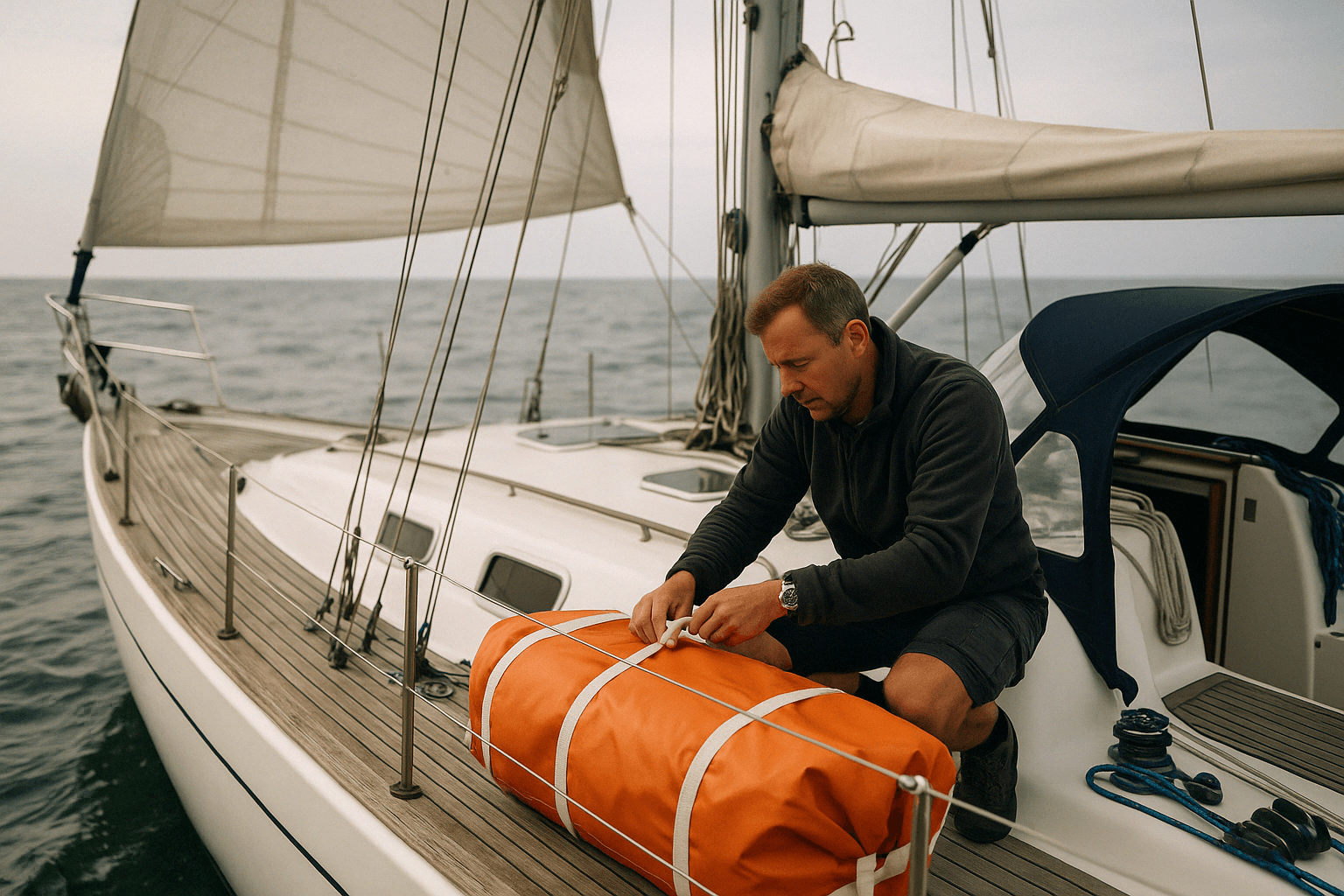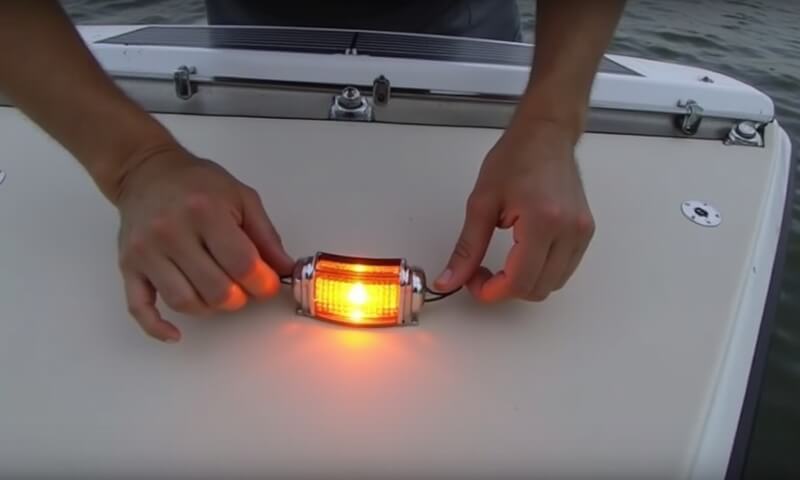A VHF marine radio is still the fastest, most reliable way to reach help or coordinate with other vessels. Unlike mobile phones, a VHF broadcast is heard simultaneously by every boat and rescue authority within range, making it both a safety net and a daily convenience. In the pages that follow you’ll learn how to set up your set, sound professional on the air, and—if the worst happens—issue a textbook Mayday that brings assistance fast.
Introduction to VHF Marine Radios
Even the smallest dinghy can carry a waterproof, handheld VHF today, yet many skippers never move beyond “Channel 16 only.” Understanding the strengths and limits of your unit will let you exploit its full potential—whether you’re hailing a marina or warning traffic of debris in a busy inlet.
What Is a VHF Marine Radio?
Very-high-frequency radios operate between 156 MHz and 174 MHz, a slice reserved internationally for maritime use. Because VHF signals travel “line-of-sight,” antenna height matters: a handset on deck might reach five nautical miles, while a mast-mounted antenna can push 25 NM or more.
VHF vs. Other Marine Communication Tools
Satellite messengers excel offshore; smartphones excel near shore; but only VHF puts you in an always-listening conversation with every vessel and coast station nearby. It’s free to use, it summons immediate local aid, and its open-circuit nature lets rescuers triangulate your position even if you cannot provide coordinates.
Pre-Use Checklist and Setup
A one-minute check before leaving the dock prevents nine-tenths of on-water radio headaches. Think of this like clipping on a life jacket: routine yet critical.
Checking Power Supply and Antenna
Confirm your main and backup sets are fully charged or wired to a healthy battery bank. Inspect the antenna cable for corrosion and be sure the whip is vertical and clear of metal obstructions.
Selecting the Right Channel
Set Channel 16 for watch-keeping, but dial up your local working channel—often 68, 72, or 77—before routine chatter. Commercial traffic typically uses 13 (bridge-to-bridge) or 71, while marinas often monitor 09.
Adjusting Squelch and Volume
Turn squelch fully counter-clockwise, raise the volume, then increase squelch slowly until static disappears. This ensures weak signals still break through without continuous white noise.
Routine Communication Protocols
Sounding professional earns respect and speeds responses, especially in crowded harbors where bandwidth is precious.
Channel 16 – The Calling and Distress Channel
International law requires recreational vessels to guard 16 while underway. Make your initial hail here, then shift once contact is established. Staying on 16 for chit-chat blocks real emergencies.
Pro-Words and Radio Etiquette
Use “Over” to hand the mic to the other party, “Out” to end the exchange, and “Roger” to acknowledge. Keep transmissions under 30 seconds where possible and think before you key the mic—airtime is shared space.
Making a Standard Call
Key the mic and say the name of the vessel you’re calling three times, followed by “THIS IS” and your own vessel name once:
“Summer Breeze, Summer Breeze, Summer Breeze, THIS IS Nightstar. OVER.”
Release, await reply, then coordinate a switch: “Nightstar, go to seven-two. OVER.”
Emergency Channels and Priority
In distress, procedure hierarchy matters. The clarity of your first words can shave minutes off rescue response.
Distress, Urgency & Safety Calls
- Mayday: Grave and imminent danger to life or vessel.
- Pan-Pan: Urgent but not immediately life-threatening (e.g., engine failure near rocks).
- Sécurité: Navigational or meteorological warnings.
Digital Selective Calling (DSC) Distress Alert
Modern sets with MMSI numbers can send an automatic DSC burst on Channel 70 that includes your ID and, if linked to GPS, your position. After the alarm, the radio automatically switches to 16 for voice follow-up.
Mayday Procedures – Step-by-Step
When seconds count, follow a proven script rather than improvising.
Distress Signal Format
- “MAYDAY, MAYDAY, MAYDAY.”
- “THIS IS [vessel name] [vessel name] [vessel name].”
- “MAYDAY [vessel name].”
Information to Include
Clearly state:
- Your position (lat/long or bearing / distance from a known landmark).
- Nature of distress (fire, collision, taking on water).
- Assistance required.
- Number of persons on board and any injuries.
- Description of the vessel (type, length, color).
Finish with “OVER.”
Waiting for Acknowledgment & Repeating the Call
Listen for 10 seconds. If no reply, repeat the full call. Continue until you receive acknowledgment. Switch to high-power if reception is weak, but keep transmissions concise—rescuers need bandwidth to coordinate.
Pan-Pan and Sécurité Calls
Reserve the top-shelf “Mayday” for genuine peril; lesser situations still demand structured communication.
When to Use Pan-Pan
Mechanical failure, medical concern, or loss of navigational capability merits “Pan-Pan.” It alerts authorities you might escalate to Mayday if conditions worsen.
When to Use Sécurité
Hazards to navigation—floating debris, fog, or a partly submerged container—call for a “Sécurité” broadcast. Inform others so they can alter course or speed.
Switching to a Working Channel
After your safety or urgency preamble, direct traffic to a secondary channel to free up 16. Example: “Sécurité Sécurité Sécurité, all stations, this is Orion at anchor in Smith Channel—large log reported drifting mid-channel at green buoy seven. For further information monitor channel six-eight. OUT.”
Common Mistakes and How to Avoid Them
- Talking before listening: You may block an ongoing Mayday. Pause two seconds before keying.
- Failing to identify: Always state your vessel name. Anonymous calls waste time.
- Using high power for every call: Low power (1 W) reduces clutter and battery drain when hailing a nearby marina.
- Channel mis-use: Don’t conduct fishing gossip on 16—shift promptly.
Maintenance and Legal Requirements
A silent radio on inspection day—or worse, during an emergency—invites fines and danger alike.
Regular Testing and Servicing
Do a radio check on a working channel, not 16. Inspect coax connectors quarterly; a dab of dielectric grease wards off salt corrosion. Replace cracked antenna whip tubing immediately.
Licensing and Record-Keeping
In many jurisdictions a Ship Station License and unique MMSI are mandatory for DSC-equipped sets. Log any distress call or test DSC alert in your vessel’s radio logbook—regulators may request it after an incident.
Quick Reference Cheat-Sheet
- Primary Watch: Channel 16 (156.8 MHz)
- Standard Call Order: Vessel called ×3 → “THIS IS” → Your vessel ×1 → Message → “OVER.”
- Distress Priority: Mayday → Pan-Pan → Sécurité
- Mayday Essentials: Position • Nature of distress • Assistance needed • People aboard • Vessel description
- DSC Shortcut: Press and hold distress button 3 sec → Provide voice follow-up on 16
- Low vs. High Power: 1 W routine within 5 NM • 25 W for long range or distress
Print and laminate this list; tape it beside the radio so anyone aboard can summon help with confidence.




Leave a comment
This site is protected by hCaptcha and the hCaptcha Privacy Policy and Terms of Service apply.